Exploration of the SPOC-based Blended Teaching Model:Case Study of Business English Course
Department of Foreign Language,Minjiang University,Fuzhou,China Email:664840193@qq.com
[Abstract]This study is meant to examine the feasibility and effectiveness of the SPOC-based blended teaching model.Business English,a course for English major,is one of the first selected courses at Minjiang University to implement the blended teaching model with self-authored SPOC.And this paper introduces the context,implementation,assessment of the SPOC-based blended teaching model while exploring its effectiveness through empirical study and data analysis.It is proved that the SPOC-based blended teaching bears an advantage over the traditional offline-only teaching model in terms of student satisfaction,teaching efficiency and student performance.These findings are expected to cast some light on the reform of pedagogic methodology.
[Keywords]SPOC;blended teaching;MOOC;learning platforms;evaluation
Introduction
With the in-depth development of Internet,information technology has been extensively applied to higher education.On Jan 19th,2017,the Chinese State Council launchedThe 13th Five-year Plan for the Development of National Education,where Internet-plus Education is highlighted with technologies like big data and cloud computing.In 2019,the Ministry of Education issued the Double Ten-Thousand Plan to cultivate 3000 online“golden”courses and 6000 online-and-offline blended“golden”courses(MOE,2019).The policies have witnessed the surge of online courses from the globally trendy MOOCs(Massive Open Online Courses)to SPOCs(small private online course).How to optimize the integration of online teaching resources and offline course has become a commonly-pursued subject in the whole higher education community.
MOOC and SPOC
MOOC,Massive Open Online Course,marked in 2012 the beginning of big data era in education(Chen et al,2019).Universities such as MIT and Stanford launched three major MOOC platforms of Coursera,edX and Udacity,providing access to the first-class courses for global leaners.And in China,the well-known MOOC platforms are also rising,including XuetangX,Icourse,Ewant,etc.In a certain sense,MOOCs influence the traditional lecture courses by providing a new teaching approach where students can repeatedly watch online videos(Siemon,2013).However,the massive access to the online courses limits the learning efficiency as it offers no effective interaction between teachers and students,which leads to a low learning sustainability.
SPOCs,small and private online course,emerge as a way to use MOOC technology for private courses.(Fox,2013)SPOCs target on on-campus courses as students can watch videos and finish extra exercises out of the regular face-to-face offline class,making the process of learning more efficient and productive.Thus,SPOCs provide a wellbuilt channel for the implementation of the blended teaching model.
Context of the SPOC-based Blended Teaching Implementation at the Applicationoriented University
Business English(Higher)is one of the first batch of projected online courses at Minjiang University in 2018.The course is targeting on business English beginners who are sophisticated in general English but less aware of English for business purpose.To explore the effectiveness of the blending teaching model,80 students who had taken the traditionalBusiness English(Vantage)course in the previous semester were invited to participate in the teaching experiment in the 2019-2020 academic year.
Selection of SPOCs
To select a quality SPOC corresponding to offline course sets the foundation for the implementation of the SPOCbased blended teaching(Bralic,et al.,2018).If not available,setting up a new SPOC becomes another choice although the creation of videos poses a great challenge to teachers.With the support of the university,our teaching team spent five months in authoring and uploading 24 teaching videos and multiple resources to the selected leaning platforms.
as to the selection of the supporting platform,the choice is suggested to be made depending on the education context requirements,expectation of teaching and key features of platforms.The learning platforms selected in our project are Ulearning platform and Chaoxing Erya platform.
With the joint efforts of team members,the authored videos of Business English were launched as a MOOC at Ulearning platform in May 2019 and at Erya platform in March 2020.As of Sept,2020,the course has welcome 25135 visitors(24872 at Ulearning and 263 at Erya).
With 10 topics in 24 authored videos of 10-12 minutes each,the MOOC covers basic business knowledge like advertising,sales,and entrepreneurship as well as practical business correspondence skills such as memo writing,report writing and email writing.Each unit is equipped with pre-class instruction,post-class exercises and extending materials.Table 1 gives an overview of the chapters,the number of teaching videos,the number of exercises as well as the number of extending resources included in the MOOC.
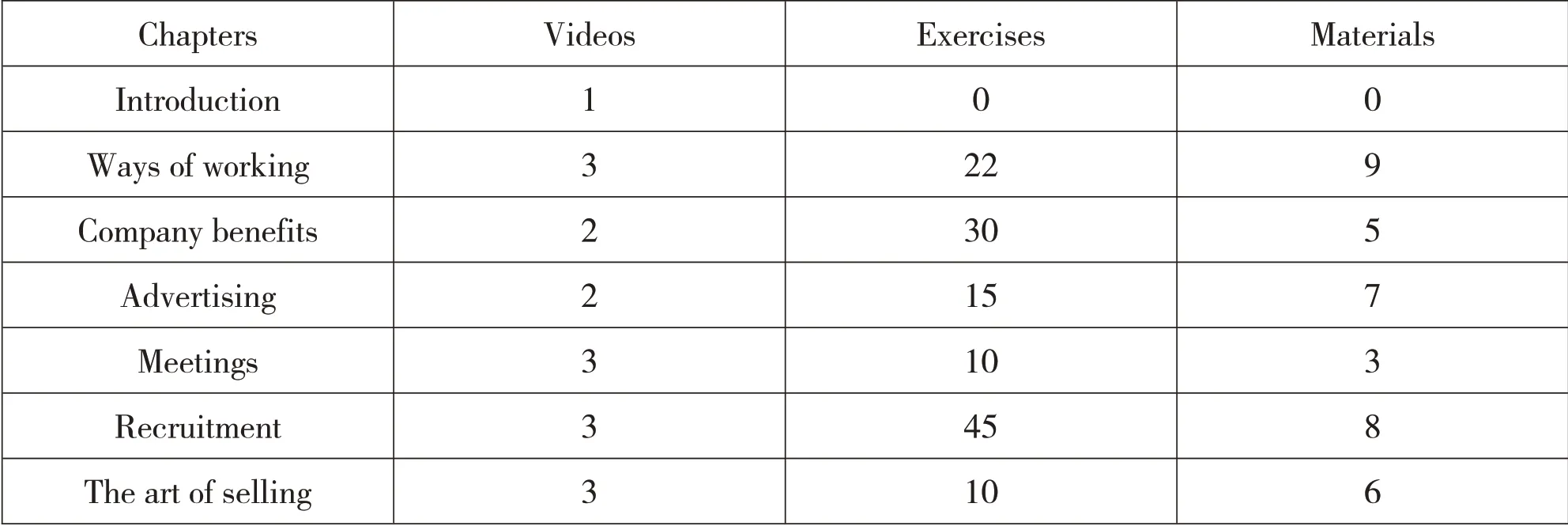
Table 1.Number of videos,exercises and extending materials in each chapter

Branding Management Teamwork 2 2 3 10 6 7 5 4 7
The self-authored MOOC Business English is adopted as a SPOC for the blended teaching experiment,with 80 participants enrolling online while having offline course in the fall semester of 2019.
Framework of the SPOC-based Blended Teaching Model
Benjamin Bloom(1956),the American educational psychologist who develops a taxonomy of educational objectives,introduces the six level of cognitive domain,including knowledge,comprehension,translation,application,analysis,synthesis and evaluation.(Benjamin,1956)The traditional teaching model tends to focus on the lower-order objectives of knowledge,memorization of facts,terms,expressions and concepts,leaving less or no time for medium and higher objectives of teaching.(Pedro,et al.,2017)However,the blended teaching model extends offline class with the self-made teaching videos and the abundant resources from the SPOC so that the lower-order objectives of knowledge memorization and comprehension can be accomplished online before class while the higher-order objectives of synthesis and evaluation can also be settled online after class.The participation of pre-and post-class study leave the offline class more flexibility for comprehension,application and analysis.Table 2 shows a general framework of the SPOC-based blended teaching model.

Table 2.Framework of the SPOC-based blended teaching model
Implementation of the SPOC-based Blended Teaching Model
The following example of Module 3.1 Starting a business presents how the blended teaching model raises the teaching efficiency and productivity through the integration of online and offline classes.

Table 3.Course Design for Module 3.1 Starting a business
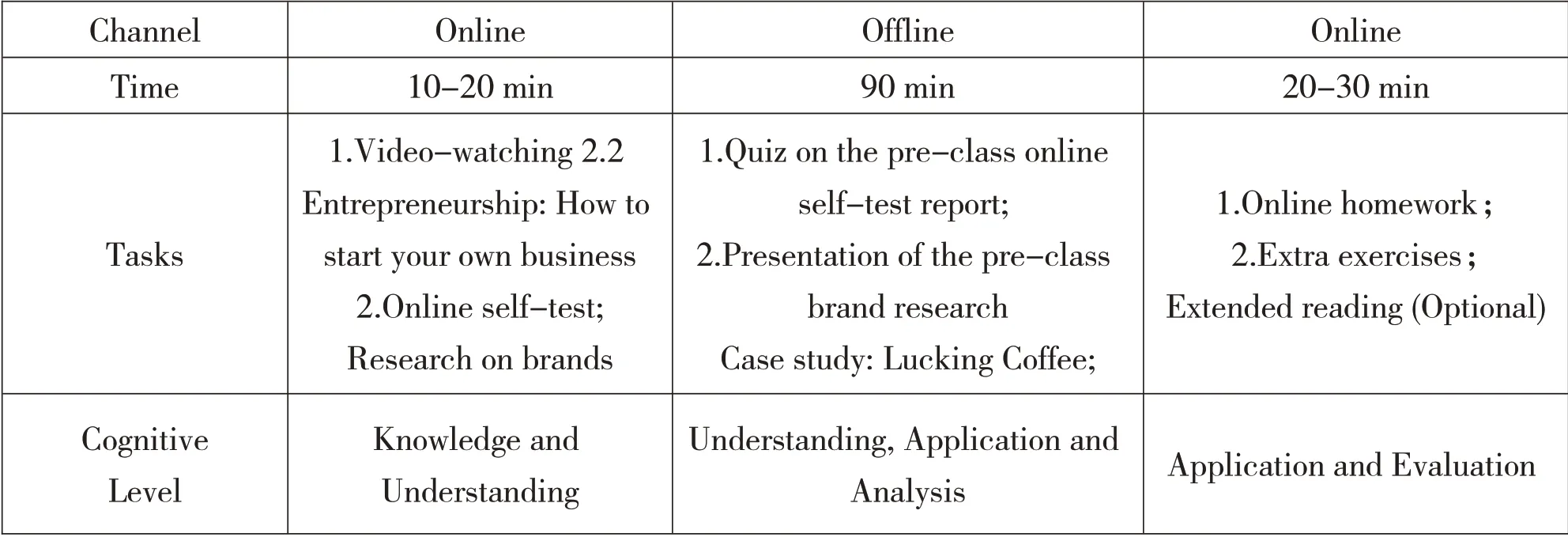
Channel Time Tasks Cognitive Level Online 10-20 min 1.Video-watching 2.2 Entrepreneurship:How to start your own business 2.Online self-test;Research on brands Knowledge and Understanding Offline 90 min 1.Quiz on the pre-class online self-test report;2.Presentation of the pre-class brand research Case study:Lucking Coffee;Understanding,Application and Analysis Online 20-30 min 1.Online homework;2.Extra exercises;Extended reading(Optional)application and Evaluation
assessment of the SPOC-based Blended Teaching Model
The assessment of the blended teaching course shall cover both online participation and offline performance.For Business English,participants are assessed according to the three phases of teaching,pre-class,in-class and postclass.Such diversified learning evaluation can fully reflect the understanding of students and more conducive to improve the initiative of learning(Wang,et al.,2011).Table 3 gives an overview on the assessment system of Business English.
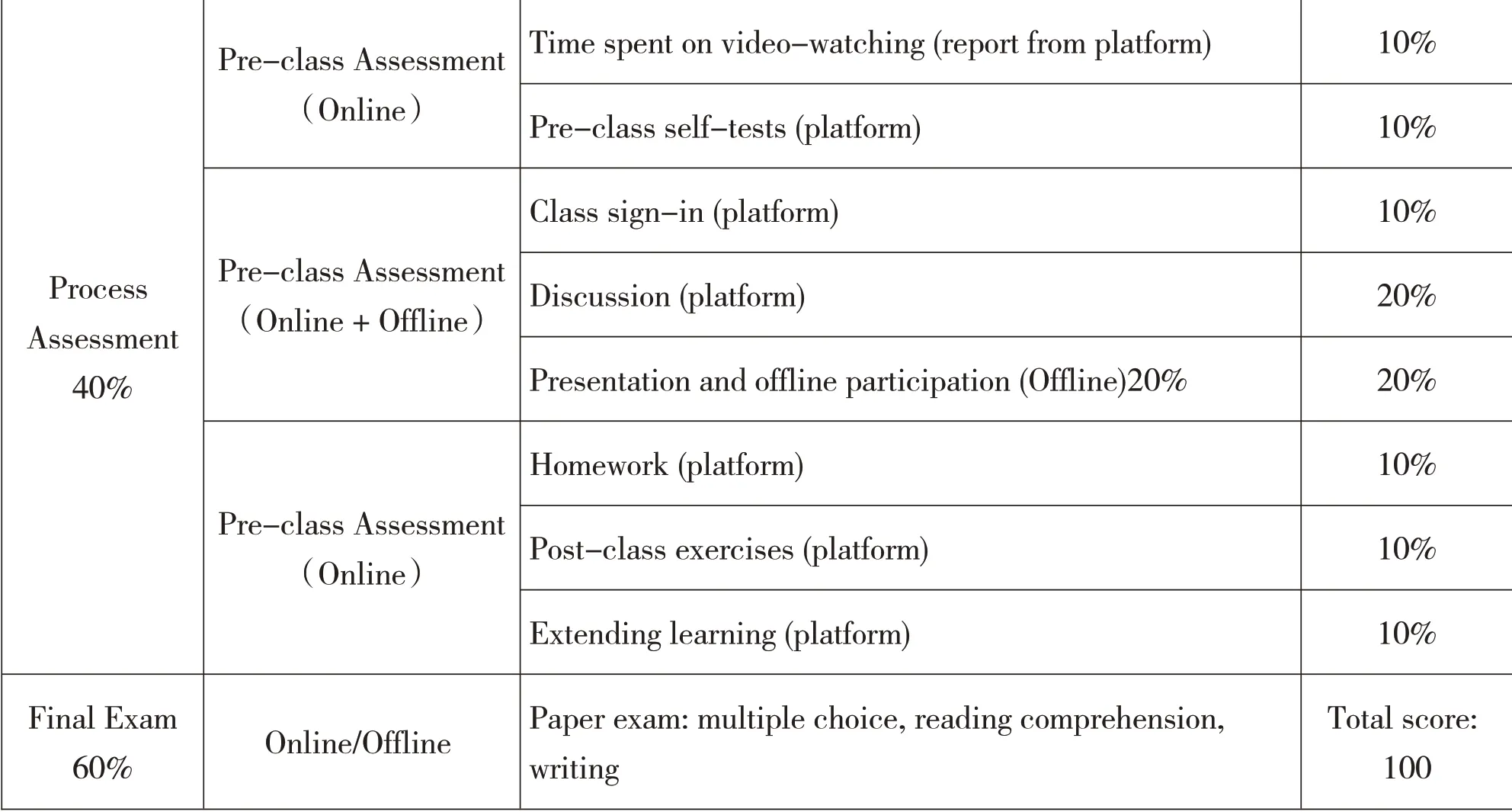
Table 3.Assessment of blended teaching model
Effectiveness of the SPOC-based Blended Teaching Model
One important functionality provided by the online platforms is its learning analytics support.(Jong,2016)After each class,the platform will generate reports about students’online performance,including time spent on videowatching,results of tests,class participation and so on.The learning analytics help teachers better follow the learning process of students and figure out where students are struggling in(Kiely,et al.,2016).
Time Spent on Learning
It is shown in Figure 1 that students spend an average of 219.5 minutes on watching the videos at Erya platform while the individual video-watching record is 6776.2 minutes.All the chapters have been studies for 11186 times while the record of the individual chapters-studying is 1766 times.
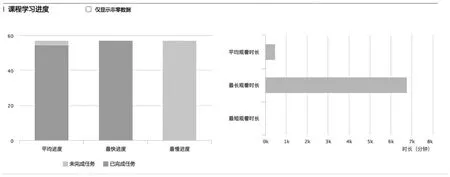
Figure 1.Report on time spent on the Erya learning platform
Course Evaluation
With the blended teaching methodology,the traditional offline-only teaching model is optimized as students have access to abundant teaching resources and a higher interaction between teachers and students have achieved.As a result,we’ve seen in Table 4 a 1.03 increase of student satisfaction on the course of Business English,from 93.9 to 94.923.
Results of Final Exam
and the effectiveness of the blended teaching methodology has also been proved through the exam results.By comparison to the traditional offline-only class in the previous semester,we’ve also seen an increase at 90-100 level from 0.00%to 17.67%as well as a decline of failing rate from 7.89%to 0%.
Conclusions and Reflections
It can be concluded that the SPOC-based blended teaching model enjoys an advantage over the traditional offline teaching model,providing a feasible and effective way to enhance both student satisfaction and teaching efficiency through the combination of teaching channels,the extension of class as well as the availability of abundant resources.However,it also poses great challenges to teachers in terms of data collection,video authoring,course design and IT technology(Combefis,2014).
Video-authoring
Video authoring is the most complicated process in the SPOC-based blended teaching model as it involves with online course design,script preparation,data collection,video filming,video production as well as uploading at online platforms.For most of teachers who are not able to author an online course themselves which is costly and time-consuming,it is suggested to select an existing MOOC available at various platforms as SPOC.It is worth mentioning that quality of SPOC as well as correspondence between SPOC and offline course can be crucial to the implementation of blended teaching.
Course Design
For the SPOC-based blending teaching model,a reasonable course design is a key.Factors to consider are level of participants(beginner or advancer),objective of course,nature of course(theoretical or practical),data availability as well as online-offline proportion.In a word,the SPOC-based blending teaching design shall be tailored to the participants to reach the best effect.
IT Technology
Teachers implementing blended teaching model are not necessarily experts in computer or IT.However,a minimum requirement of mastering data uploading,platform operation and analytics acquisition is needed.
all in all,the SPOC-based blended teaching model provides a new effective pedagogic methodology in the information era.Teachers are suggested to customize the blending teaching model to cater to the needs of different teaching contexts.
Acknowledgements
This paper is funded by 2019 College Teaching Methodology Reform and Practice Research Project of Minjiang University(NO.MJU2019SKC05).
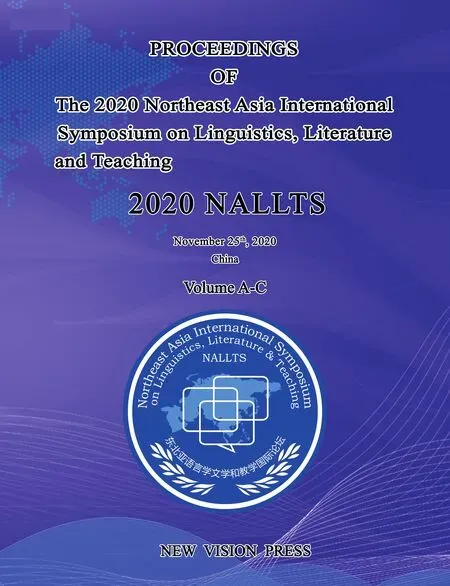 Proceedings of Northeast Asia International Symposium on Linguistics,Literature and Teaching2020年0期
Proceedings of Northeast Asia International Symposium on Linguistics,Literature and Teaching2020年0期
- Proceedings of Northeast Asia International Symposium on Linguistics,Literature and Teaching的其它文章
- Reducing Students’Foreign Language Speaking Anxiety Through Drama Performance
- An Action Research on Blended Learning through News Broadcasts in EFL Listening Context
- Growth Mindset in Teaching
- A Study on Corpus Stylistics Assisted English and American Literature Teaching
- Promoting Architectural Values in Culturebound Scenery in Tourist Destinations
- A Data-driven Study on the Semantic Prosody of Near-Synonyms
